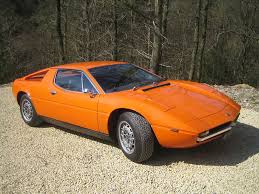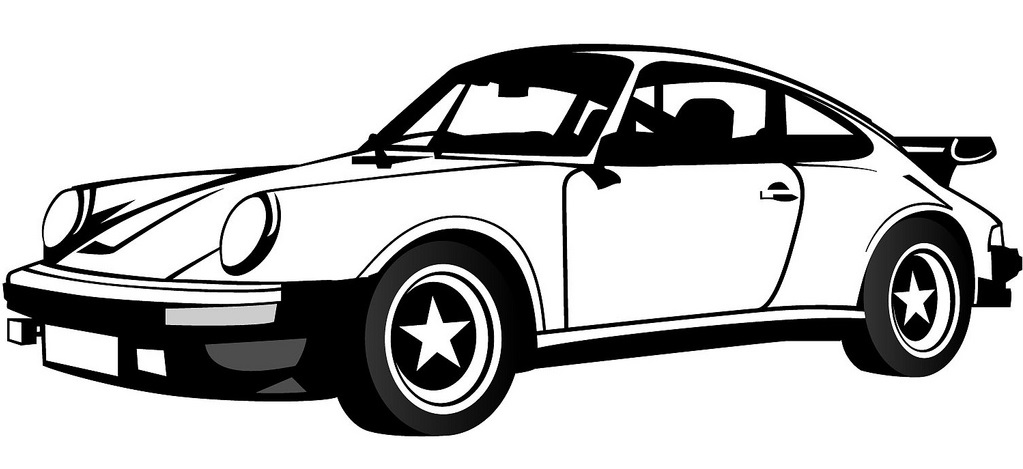A brief history of
Daihatsu
Introduction
The car manufacturer Daihatsu has made an important impact on the automotive world. In this article we will give a brief but detailed history of the Daihatsu marque.
We will look at the origins of Daihatsu looking at who, why, where and when Daihatsu was founded. We'll look at the design of the iconic Daihatsu logo and what are some the more significant Daihatsu models.
We'll take a glance at what racing history the Daihatsu has and who some of the most important people have been in the history of Daihatsu over the years.
Who, where, when and why was
Daihatsu founded?
Daihatsu is a renowned Japanese car manufacturer that has been producing vehicles for over a century. The company was founded in 1907 by two entrepreneurs, Hatsudoki Seizo Co., Ltd., in Japan. The company initially started as an engine manufacturer, providing engines for various applications such as power generators and marine vessels. However, in 1951, Daihatsu shifted its focus to automobile production and began manufacturing compact cars.
The decision to enter the automotive industry was driven by the increasing demand for affordable and fuel-efficient vehicles in Japan. Daihatsu aimed to provide reliable transportation options for the masses, particularly in urban areas where space and fuel efficiency were crucial. By producing small and compact cars, the company targeted the growing market for economical vehicles, making transportation more accessible to a wider range of consumers.
Daihatsu's commitment to quality and innovation has been a driving force behind its success. The company has been at the forefront of technological advancements in the automotive industry, developing fuel-efficient engines, hybrid systems, and alternative fuel vehicles. Daihatsu has also collaborated with other manufacturers, such as Toyota, to leverage their resources and expertise in furthering its automotive capabilities.
Over the years, Daihatsu has expanded its presence globally, exporting its vehicles to numerous countries around the world. The company has established a reputation for producing reliable and durable vehicles that meet the needs of various markets. Additionally, Daihatsu has embraced sustainability and environmental consciousness, integrating eco-friendly technologies into its vehicle lineup.
Today, Daihatsu continues to innovate and evolve, focusing on producing compact cars and developing electric and hybrid vehicles. The company's dedication to fuel efficiency, practicality, and affordability has made it a trusted brand in the automotive industry. With a strong commitment to customer satisfaction and a rich history of engineering excellence, Daihatsu remains a prominent player in the global automotive market.
How did the
Daihatsu logo originate?

How did the Daihatsu logo originate?
The Daihatsu logo has undergone several changes throughout its history, reflecting the evolution and growth of the company. The logo represents the brand's identity and serves as a visual symbol of its values and aspirations. The original Daihatsu logo featured the company name in bold, uppercase letters with a distinct red color. It conveyed a sense of strength and reliability, aligning with the company's commitment to producing high-quality vehicles.
As the company progressed and expanded its global presence, the Daihatsu logo underwent refinements to adapt to changing trends and market demands. In the 1970s, the logo underwent a transformation with a new design that featured a stylized "D" enclosed within a circle. The circular shape symbolized unity and integrity, reflecting Daihatsu's commitment to delivering trustworthy and dependable vehicles.
In the 1990s, the Daihatsu logo received another update, showcasing a more modern and dynamic design. The circular shape was replaced by an oval, representing continuous innovation and progress. The logo also featured a simplified, stylized "D" that conveyed a sense of speed and agility. The color palette was updated to a sleek silver and blue combination, reflecting the brand's contemporary image.
Throughout its history, the Daihatsu logo has evolved to capture the essence of the brand and its values. It has consistently represented the company's dedication to quality, reliability, and technological advancements. The logo's evolution reflects Daihatsu's ability to adapt to changing market trends and customer preferences while maintaining its core identity as a manufacturer of practical and efficient vehicles.
What are some of the significant
Daihatsu models?
Daihatsu has produced a range of notable models throughout its history, including several high-performance vehicles that have left a lasting impact on the automotive industry. These models showcase Daihatsu's commitment to innovation, performance, and driving pleasure.
One of Daihatsu's significant high-performance models is the Daihatsu Charade GTti, introduced in the 1980s. It featured a turbocharged 1.0-liter engine that produced impressive power and acceleration. The Charade GTti's lightweight design and agile handling made it a thrilling and enjoyable car to drive, earning it a reputation for its sporty performance in a compact package.
In the 1990s, Daihatsu released the Daihatsu Copen, a small convertible sports car that captured the hearts of enthusiasts. The Copen featured a folding hardtop roof and a range of engine options, including a turbocharged variant. With its nimble handling and stylish design, the Copen offered an exhilarating driving experience while providing the joy of open-top motoring.
Another notable high-performance model from Daihatsu is the Daihatsu Materia Turbo, introduced in the early 2000s. This compact car boasted a turbocharged engine that delivered impressive power and torque, resulting in brisk acceleration. The Materia Turbo's unique boxy design provided a spacious interior while maintaining its sporty appeal. It appealed to drivers looking for a combination of performance, practicality, and distinctive style.
More recently, Daihatsu introduced the Daihatsu Copen GR Sport, a performance-focused version of the Copen. The Copen GR Sport features a tuned suspension, sportier styling elements, and enhanced driving dynamics. It embodies Daihatsu's commitment to delivering exciting driving experiences and showcases the brand's expertise in creating high-performance vehicles.
These are just a few examples of Daihatsu's significant high-performance models from different quarters of its history. These vehicles demonstrate Daihatsu's dedication to engineering excellence, innovation, and the pursuit of driving pleasure. With each model, Daihatsu has showcased its ability to combine performance, agility, and practicality in a way that resonates with car enthusiasts and captures the spirit of fun behind the wheel.

One of Daihatsu's Most Iconic Models
Who are some of the most important people in
Daihatsu's History
Behind the success of Daihatsu are the talented individuals who have contributed to the brand's growth and development. These key people have played important roles in shaping the company's direction, driving innovation, and creating significant contributions to the automotive industry.
One notable figure is Mr. Osamu Masuko, who served as the President and CEO of Daihatsu from 1999 to 2007. Under his leadership, Daihatsu experienced significant expansion in both domestic and international markets. Masuko's strategic vision and focus on product development led to the introduction of several successful models, including the aforementioned high-performance vehicles. His commitment to quality and customer satisfaction helped establish Daihatsu as a reputable brand known for its reliable and efficient vehicles.
Another influential person within Daihatsu's history is Mr. Koichi Ina. Ina served as the President and CEO of Daihatsu from 2007 to 2013. During his tenure, he emphasized the importance of environmental sustainability and led the company's efforts in developing eco-friendly technologies. Ina's commitment to reducing carbon emissions resulted in the introduction of hybrid and electric vehicles in Daihatsu's lineup, showcasing the brand's dedication to environmentally responsible mobility.
In recent years, Mr. Soichiro Okudaira has made significant contributions to Daihatsu's success. Serving as the President and CEO since 2013, Okudaira has continued to strengthen the brand's position in the market. His focus on research and development has driven innovation, leading to the introduction of advanced technologies and new vehicle platforms. Okudaira's leadership has positioned Daihatsu as a forward-thinking brand, ready to embrace the future of mobility.
It is important to recognize the efforts of the many engineers, designers, and technicians who have contributed to the development of Daihatsu's most significant models. Their dedication and expertise have been instrumental in creating vehicles that deliver performance, reliability, and innovation. These individuals work behind the scenes, ensuring that each Daihatsu model meets the brand's high standards and exceeds customer expectations.
The success of Daihatsu is the result of a collective effort from these individuals and many more who have contributed their skills, knowledge, and passion to the brand. Their commitment to excellence, innovation, and customer satisfaction has shaped Daihatsu into the respected and admired manufacturer it is today.

One of the most influential people in the history of Daihatsu
Daihatsu's Racing History
Daihatsu may not be widely known for its racing heritage, but the company has made notable contributions to motorsports throughout its history. While not as prevalent as some other manufacturers in racing, Daihatsu has participated in various racing disciplines, showcasing its engineering prowess and pushing the limits of its vehicles.
One significant chapter in Daihatsu's racing history is its participation in rally competitions. In the 1980s and 1990s, Daihatsu developed a strong presence in the World Rally Championship (WRC) with its Charade and Cuore models. These compact and nimble cars demonstrated impressive performance, particularly in the under 1300cc class. Daihatsu's rally team showcased the brand's technical expertise and proved that smaller-displacement engines could be competitive in the demanding world of rallying.
In addition to rally racing, Daihatsu has also ventured into other motorsports disciplines, including endurance racing. The brand has competed in events such as the 24 Hours of Nürburgring, where teams push their cars to the limit for an entire day. Daihatsu's participation in endurance racing demonstrates the durability and reliability of its vehicles, as well as its commitment to continuous improvement and testing under demanding conditions.
Furthermore, Daihatsu has been active in one-make racing series, which provide a platform for both professional and amateur drivers to compete in identical vehicles. One notable example is the Daihatsu Midget Racing series in Japan, where drivers compete in the small and distinctive Daihatsu Midget vehicle. These one-make series not only showcase the performance capabilities of Daihatsu's vehicles but also foster a sense of community and friendly competition among racing enthusiasts.
While Daihatsu's racing history may not be as extensive or well-known as some other manufacturers, it reflects the brand's commitment to engineering excellence and performance. The company's participation in rally, endurance, and one-make racing demonstrates its ability to adapt its vehicles for different racing disciplines and underscores its dedication to pushing the boundaries of performance and innovation.
It is important to note that Daihatsu's involvement in racing extends beyond simply competing on the track. The knowledge and experience gained from motorsports activities often trickle down to the development of their road cars, leading to the improvement of performance, handling, and overall driving dynamics. This transfer of technology between the racing and production divisions benefits not only the racing enthusiasts but also everyday drivers who seek an exhilarating driving experience.
Overall, while Daihatsu's racing history may not be as prominent as some other manufacturers, the brand has demonstrated its engineering capabilities and commitment to performance through its participation in various racing disciplines. Whether it's rallying, endurance racing, or one-make series, Daihatsu's involvement in motorsports highlights its passion for innovation, competition, and pushing the limits of what its vehicles can achieve.
Summary
Daihatsu is a car manufacturer that has left a lasting impact on the automotive industry through its commitment to engineering excellence and innovation. With a history dating back to 1907, the Japanese automaker has established itself as a reputable brand known for producing compact and reliable vehicles. From its humble beginnings as an engine manufacturer to its current position as a global automobile company, Daihatsu has continuously evolved to meet the changing needs of consumers.
Over the years, Daihatsu has introduced numerous models that have become iconic in their respective segments. The brand is particularly recognized for its compact cars, which offer fuel efficiency, maneuverability, and practicality. From the iconic Daihatsu Charade to the modern and stylish Daihatsu Copen, the company has consistently delivered vehicles that cater to diverse lifestyles and preferences.
Moreover, Daihatsu's racing heritage demonstrates its commitment to performance and pushing the limits of its vehicles. While not as prominent in motorsports as some other manufacturers, Daihatsu has participated in rally competitions, endurance racing, and one-make racing series, showcasing its engineering prowess and dedication to innovation. The knowledge gained from these racing activities translates into the development of their road cars, resulting in vehicles that offer impressive performance, handling, and driving dynamics.
In summary, Daihatsu is a respected car manufacturer that has earned a reputation for its engineering excellence and commitment to innovation. With a range of compact and reliable vehicles, as well as a history of participation in motorsports, Daihatsu continues to make an impact in the automotive industry.
View Daihatsu Car Specifications
More Manufacturer Histories.

























